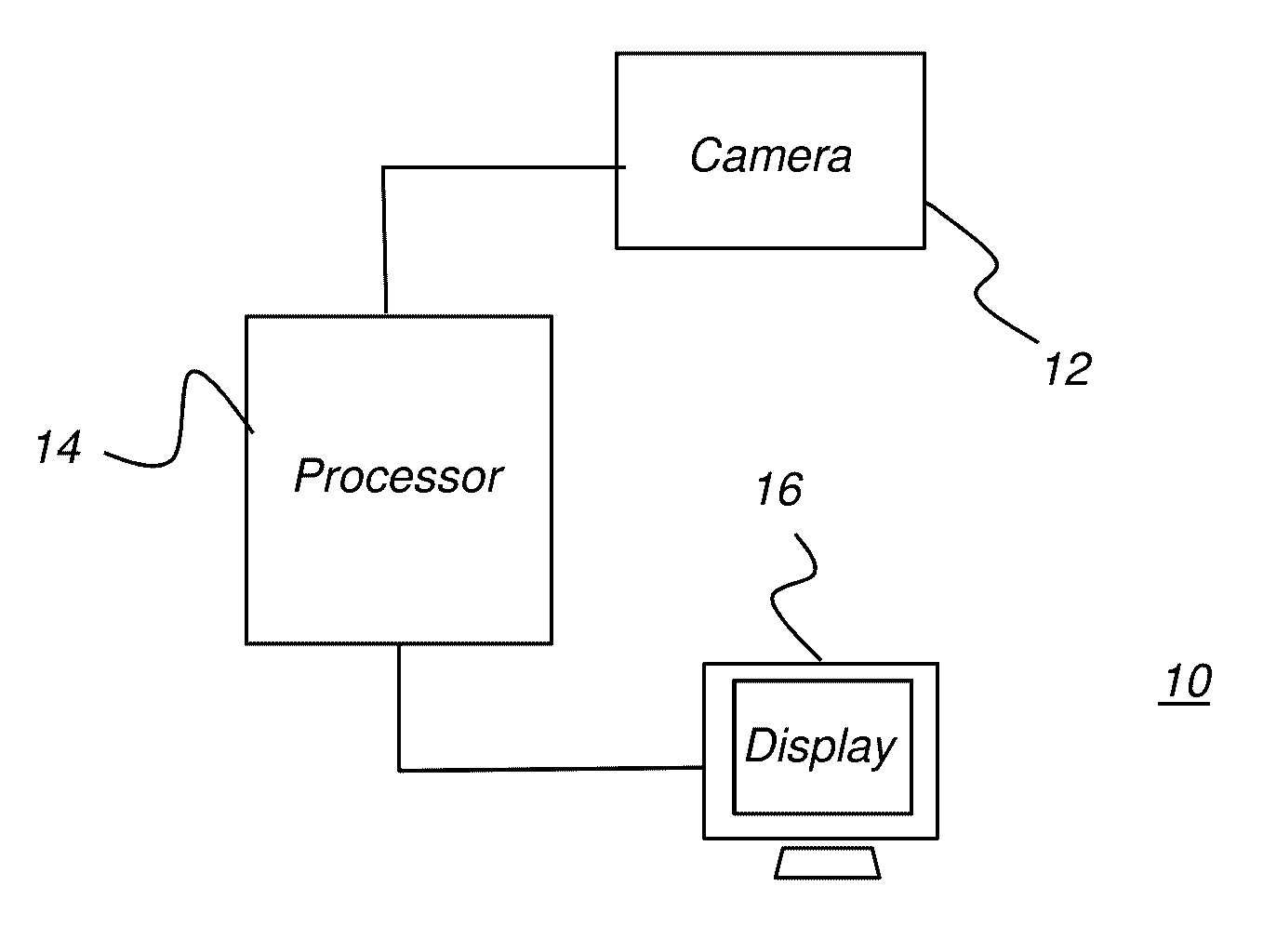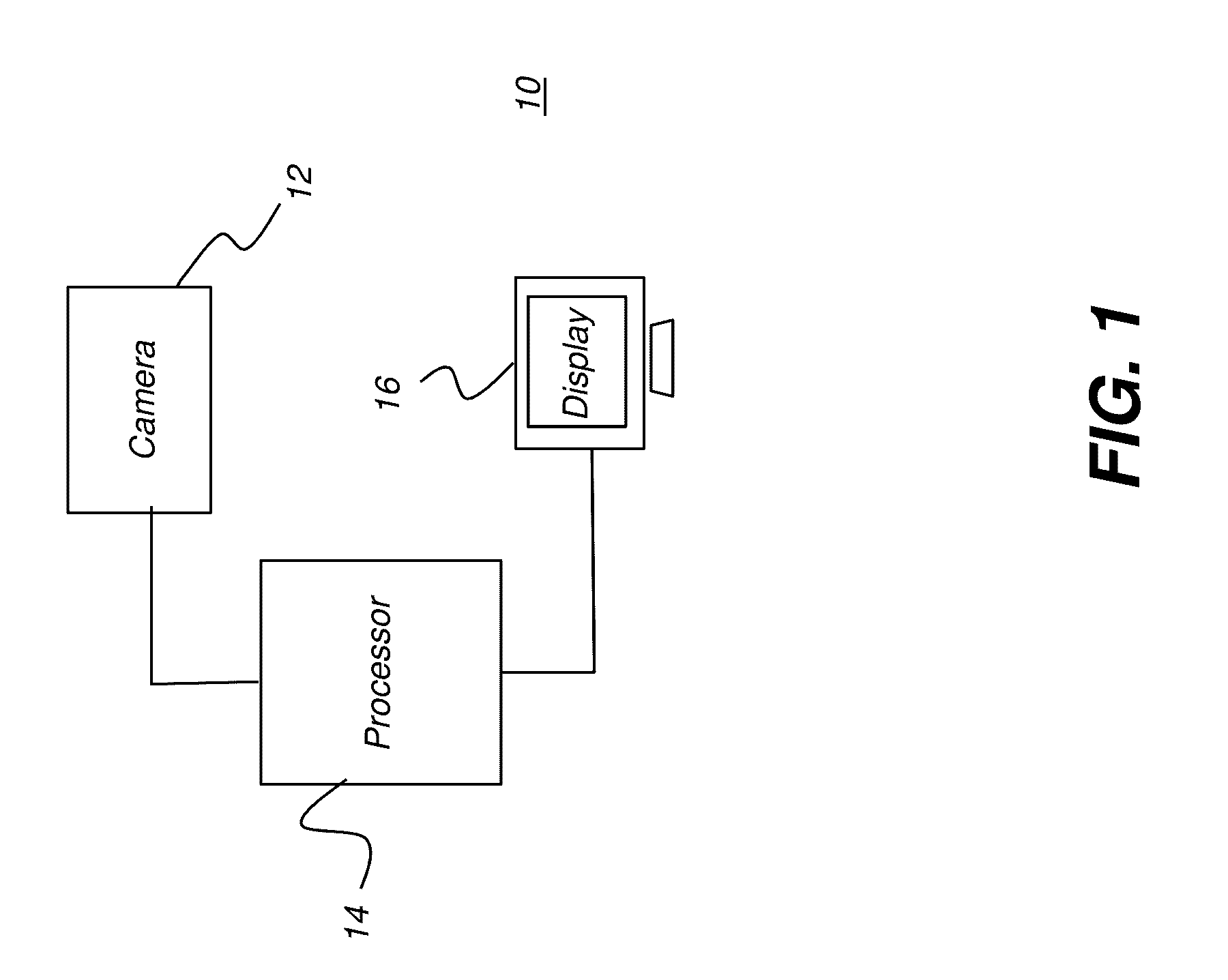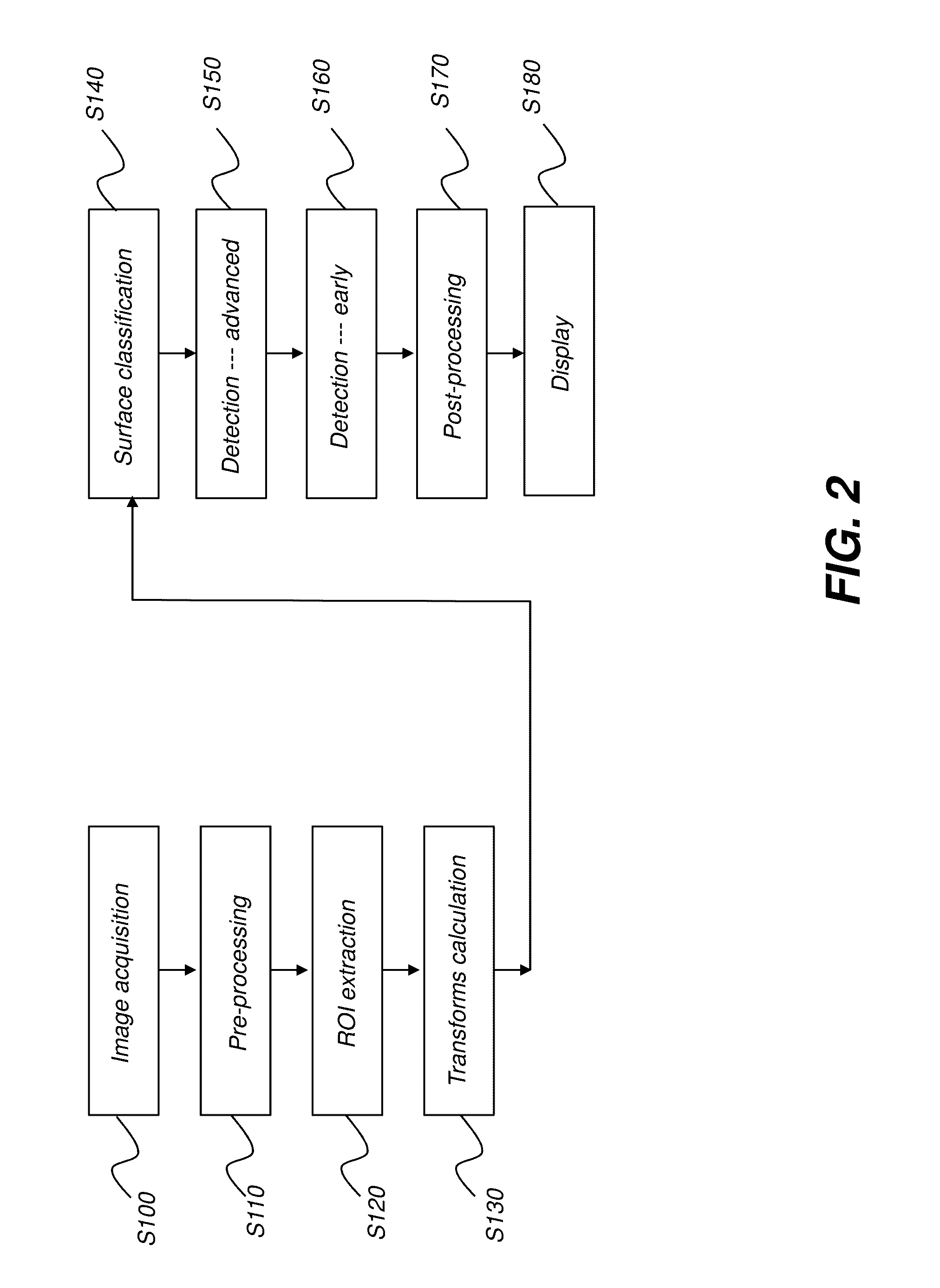Method for quantifying caries
a caries and quantitative technology, applied in image analysis, texturing/coloring, image enhancement, etc., can solve the problems of permanent tooth damage and even tooth loss, exposure to x-ray radiation, risk of damage to weakened teeth, spreading infection by tactile methods,
- Summary
- Abstract
- Description
- Claims
- Application Information
AI Technical Summary
Benefits of technology
Problems solved by technology
Method used
Image
Examples
Embodiment Construction
[0033]The following is a detailed description of the preferred embodiments of the invention, reference being made to the drawings in which the same reference numerals identify the same elements of structure in each of the several figures.
[0034]Reference is made to PCT / CN2009 / 000078, filed on Jan. 20, 2009, entitled METHOD FOR DETECTION OF CARIES, by Wei Wang et al.
[0035]Reference is made to U.S. Patent Application Publication No. 2008 / 0056551, published Mar. 6, 2008, entitled METHOD FOR DETECTION OF CARIES, by Wong et al.
[0036]Reference is made to U.S. Patent Application Publication No. 2008 / 0063998, published Mar. 13, 2008, entitled APPARATUS FOR CARIES DETECTION, by Liang et al.
[0037]Reference is made to U.S. Patent Application Publication No. 2008 / 0170764, published Jul. 17, 2008, entitled SYSTEM FOR EARLY DETECTION OF DENTAL CARIES, by Burns et al.
[0038]Reference is made to U.S. Patent Publication No. 2007 / 0099148, published on May 3, 2007, entitled METHOD AND APPARATUS FOR DETE...
PUM
 Login to View More
Login to View More Abstract
Description
Claims
Application Information
 Login to View More
Login to View More - R&D
- Intellectual Property
- Life Sciences
- Materials
- Tech Scout
- Unparalleled Data Quality
- Higher Quality Content
- 60% Fewer Hallucinations
Browse by: Latest US Patents, China's latest patents, Technical Efficacy Thesaurus, Application Domain, Technology Topic, Popular Technical Reports.
© 2025 PatSnap. All rights reserved.Legal|Privacy policy|Modern Slavery Act Transparency Statement|Sitemap|About US| Contact US: help@patsnap.com



